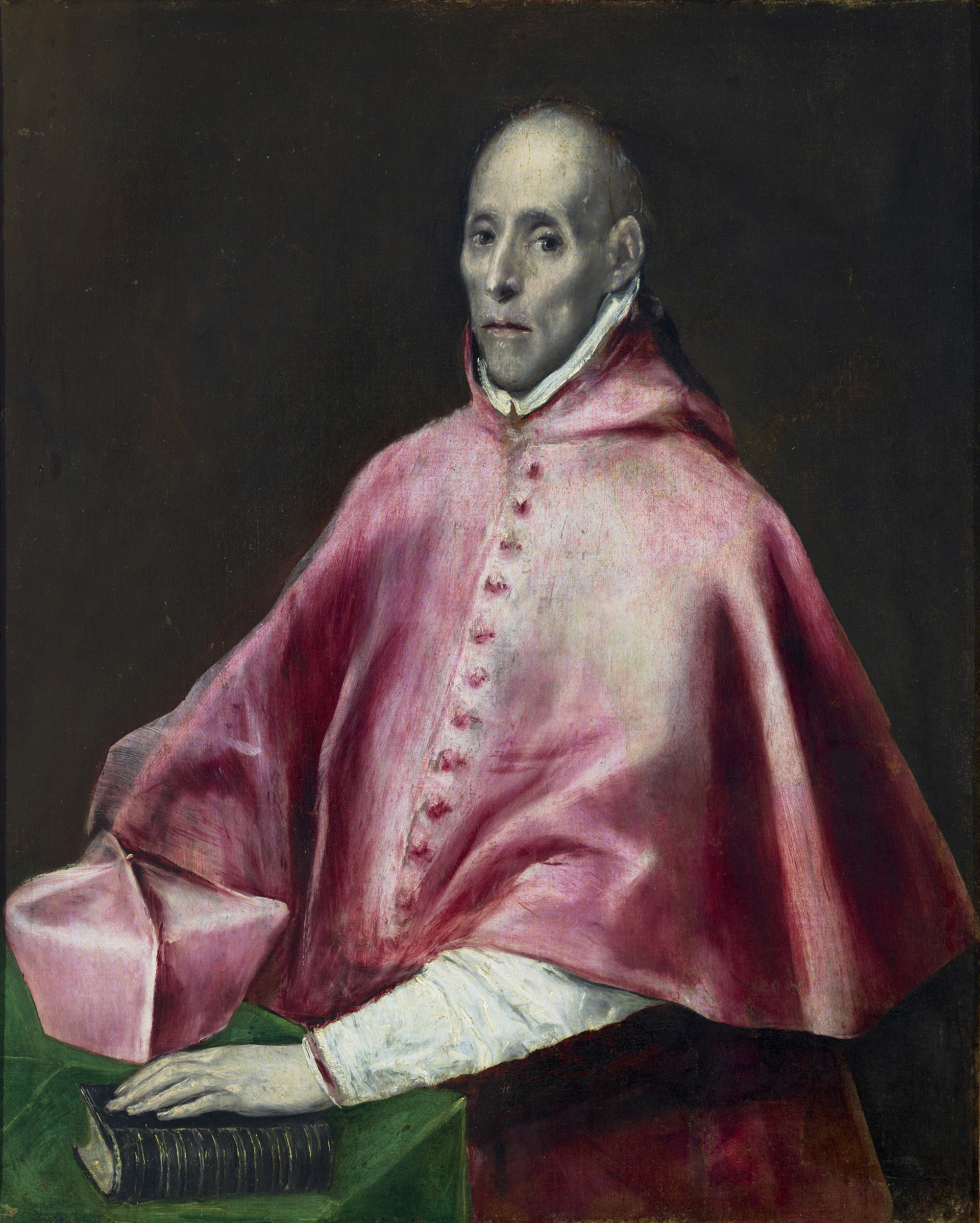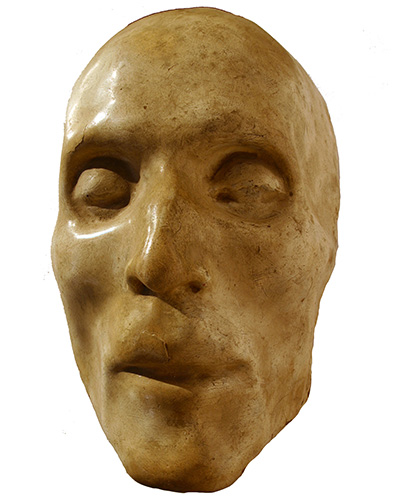Of the five canvases by the Cretan artist, probably commissioned by his friend the rector Pedro Salazar de Mendoza or part of the assets seized from Jorge Manuel Theotocópuli by the Hospital de San Juan Bautista as a result of the lawsuit over the altarpieces, the portrait of the founder of that institution stands out first and foremost, archbishop of Toledo and cardinal of the title of San Juan ante Portam Latinam, governor of the Castilian kingdom in the absence of Emperor Charles V, president of the Council of Castile and inquisitor general, Cardinal Juan Pardo de Tavera (1472-1545), originally signed but whose tiny Greek characters have disappeared from the lower right corner owing to partial deterioration of the canvas.
From the hospital chapel, from whose walls it hung, it was most probably taken from both the funerary mask preserved in the Sala del Archivo, and from the physiognomy of the portrait attributed to Alonso Berruguete based on the affirmations of Salazar de Mendoza; when he died in 1629, the latter had a portrait of the Cardinal in his rector's rooms in the hospital itself, "...", which he had in his possession.at the top of the house"However, the image engraved by Pedro Ángel and published in his historical-biographical work entitled Chrónico de el Cardenal don Ioan de Tavera (Toledo, 1603) seems to derive more from the Berruguetesque portrait, now dressed as a cardinal, than from the more modern portrait of the Cretan, to which critics have always attributed a late date, after 1608, linked to the chronology of the commission for the altarpieces.
While this portrait shows Don Juan wearing a purple biretta, dressed in a white robe and reading with a breviary resting on his cardinal's cap, El Greco's figure, despite his haggard appearance, is seated behind a table with his left hand, a biretta and a thick bound book with an illegible title, more than half-length and dressed in his cardinal's robes. Through these compositional devices, the colour and the liveliness of the brushstroke, the artist achieves an image of great immediacy and physical and psychological presence. Despite the echoes of portraits such as that of Paul III and his nephews Alessandro and Ottavio Farnese (1546) by Titian (in the Museo di Capodimonte in Naples), the composition is closer to the typology of the images of Saint Jerome in his studio, which the Candiote so often frequented.
Fernando Marías, February 2009




